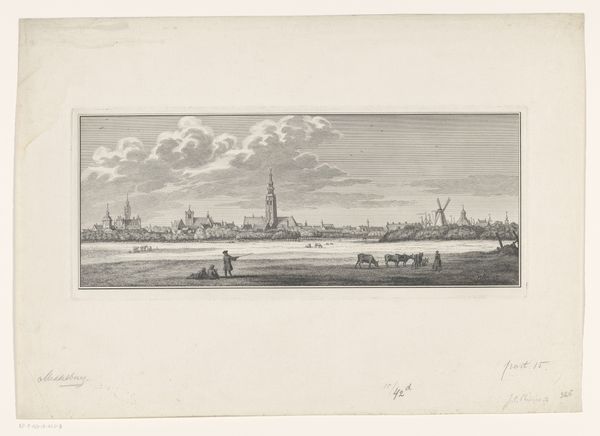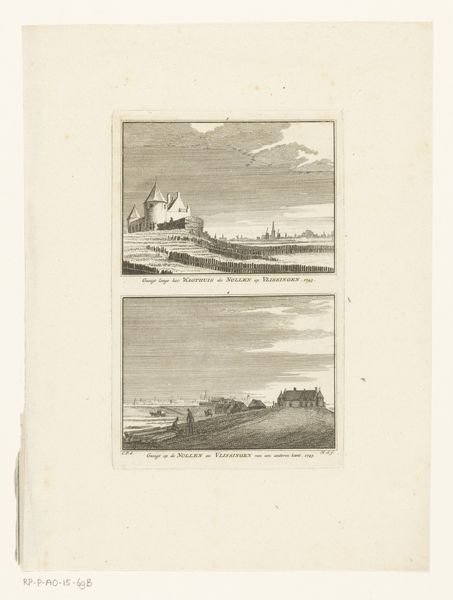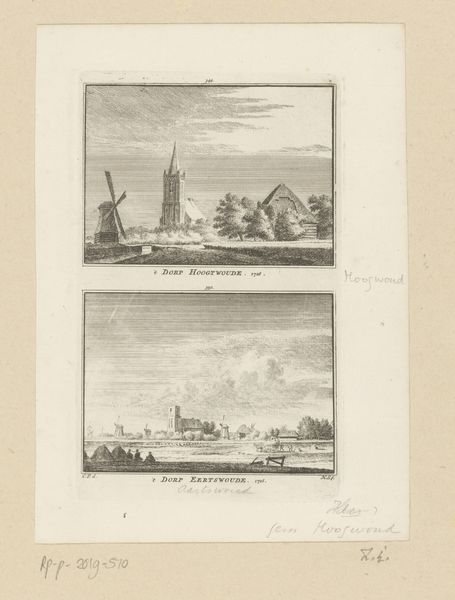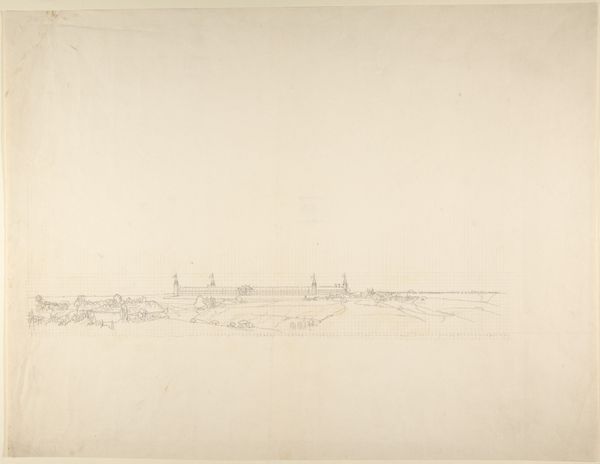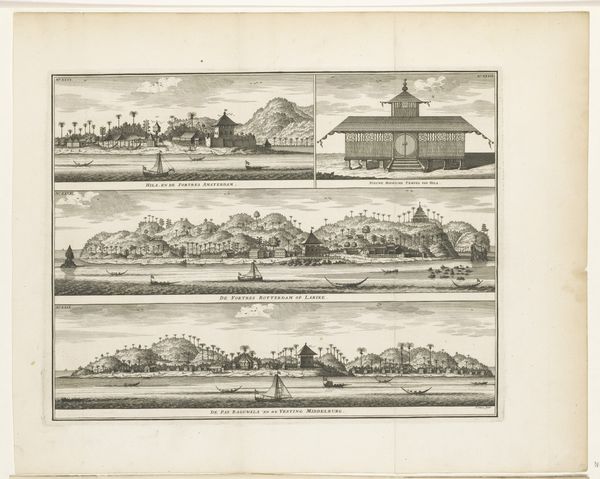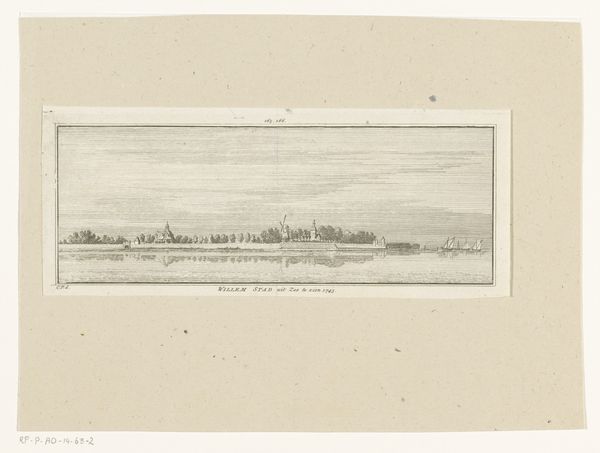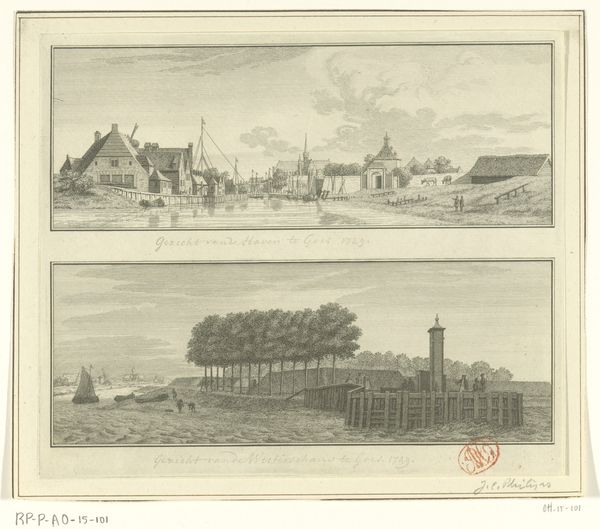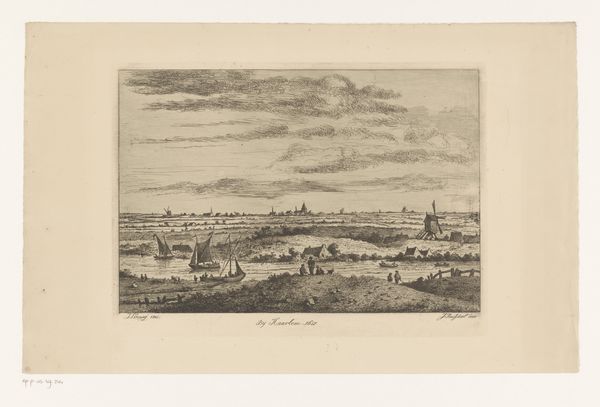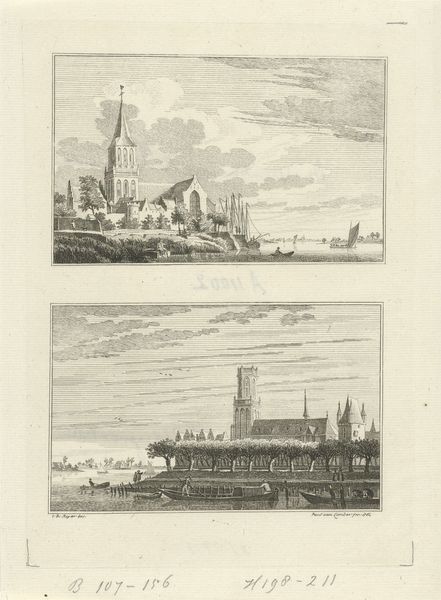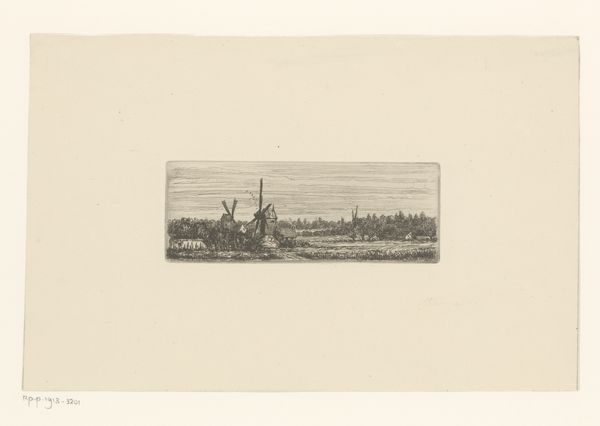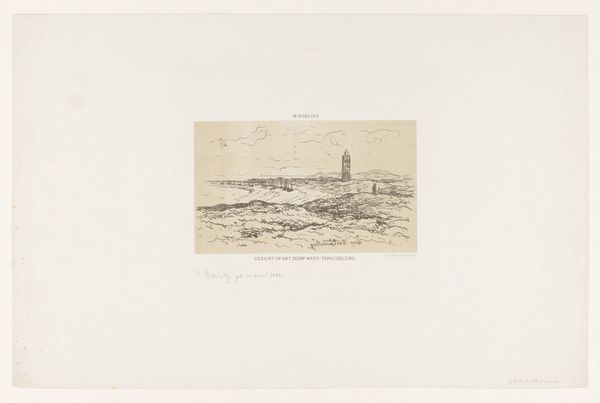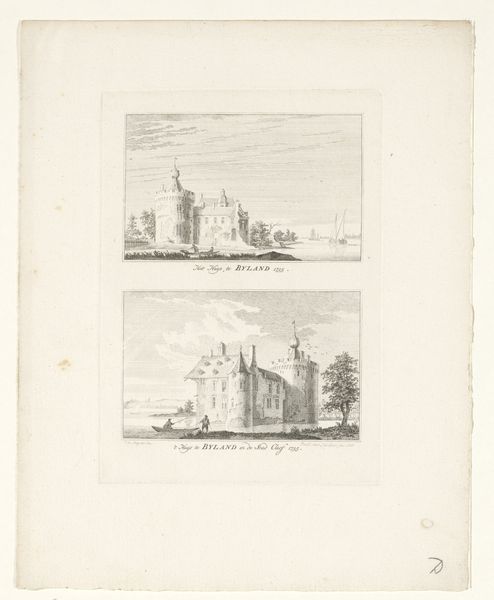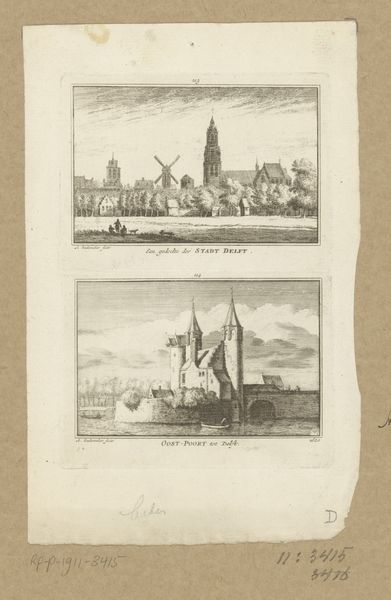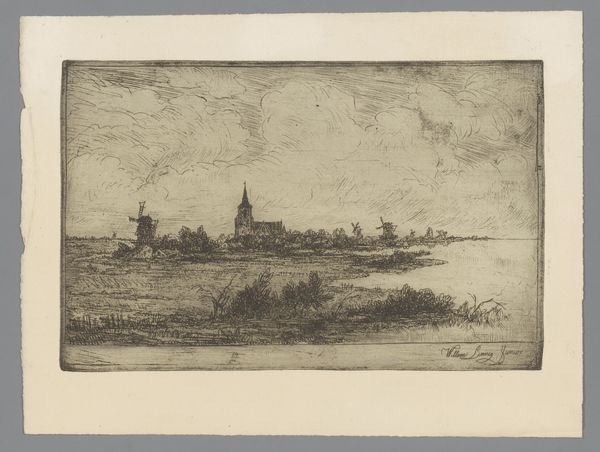
print, engraving
#
neoclacissism
# print
#
landscape
#
perspective
#
cityscape
#
history-painting
#
engraving
Dimensions: height 222 mm, width 269 mm
Copyright: Rijks Museum: Open Domain
Reinier Vinkeles created this print, Obelisk en Pharillon, sometime between 1741 and 1816, using etching. It offers a dual vision of Alexandria, Egypt, during a period when Europe was deeply invested in the imagery of the ancient world. The print captures two distinct, yet related, architectural and historical symbols. Above, we see ‘Cleopatra’s Needle’, an obelisk that speaks to Egypt’s Pharaonic past, viewed through the lens of its famous queen. Below, the Pharos of Alexandria, or ‘de grote Pharillon,’ represents Hellenistic influence and ancient innovation. The choice to depict these symbols together speaks to a narrative of Egypt as a land of layered histories, each civilization building upon the last. As we consider Vinkeles's work, it reminds us to ask: Whose stories are being told, and from what perspective? And how does this representation affect our understanding of cultural identity and historical narrative?
Comments
No comments
Be the first to comment and join the conversation on the ultimate creative platform.
